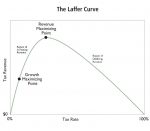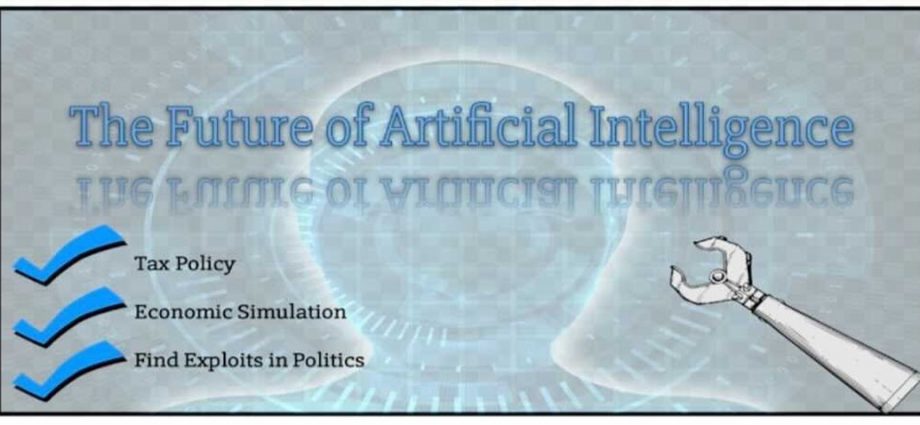Author: William Resvoll Skaug, Graphics: Acasia Giannakouros
The BRB Bottomline
Inequality is a growing concern worldwide, and governments are struggling to find a tax policy that optimizes equality without sacrificing production. A group of Harvard researchers has designed a supposedly better tax policy through a data-driven solution, using artificial intelligence to simulate economies.
Recent years have seen astonishing advances in the world of artificial intelligence, creating opportunities unlike anything we have seen before. Cars drive themselves, chatbots are indistinguishable from humans, and computers are day-trading on Wall Street. A group of Harvard researchers implemented these same technologies to perform realistic simulations on our economy. Their results point towards a revised tax policy that outperforms all previous models based on traditional analytical methods.
Reinforcement learning to simulate economies
In the Harvard study, researchers can simulate economies through reinforcement learning, a subcategory of machine learning and AI. Reinforcement learning rewards certain behaviors and punishes others. A learning agent can perceive and interpret its environment, take actions, and learn through trial and error. In this case, the study utilizes a two-level reinforcement learning model, making it possible to have two agents: workers and the dynamic tax policy. It is necessary to have two agents for a realistic economic simulation because the tax policy and the taxpayers are dynamic equivalencies. Both change behavior in response to a change in the other. For example, increasing taxes does not necessarily increase tax revenue. Businesses can become less profitable, and workers may work less, decreasing total revenue. Both reinforcement learning agents can perceive and interpret their environment, take actions and learn through trial and error.
In this case, the tax-policy agent optimizes social welfare by setting income tax rates in an economic simulation with learning worker agents. The agents optimize their post-tax utility by deciding how to perform labor and earn income. Hence, for the same amount of work, the working agents experience different utilities over time and constantly readjust what they believe is optimal behavior to maximize their utility. Both the tax-setting agent and worker agents use reinforcement learning to co-adapt and optimize their behavior. This model enables us to simulate a realistic economic environment and observe the outcomes of different tax policies.
What is the optimal taxation policy?
According to the study Optimal Taxation in Theory and Practice, “The standard theory of optimal taxation posits that governments should choose tax policies to maximize a social welfare function subject to a set of constraints.” The assumption is that by maximizing a social welfare function subject to a set of constraints, you can maximize every individual’s utility in various categories, thereby maximizing surpluses. Tax policies generally aim to maximize government revenue, but they are also an essential factor in an economy’s distribution of wealth. While an economy with low taxes may return higher earnings, this will typically result in increased inequality, as the most skilled workers end up with a large share of the income. However, having tax rates that are too high can disincentivize work, make businesses less profitable, and result in lower tax revenue. This relationship is illustrated through the Laffer curve, representing a function of taxable income elasticity. Unfortunately, the maximum revenue point of the Laffer curve is only an estimate, making it challenging to find the true optimal tax, as it is hard to predict how people will adjust their behavior in regards to the incentives created by income tax rates.
In general, economies would benefit from increased revenue if this increase could occur without the expense of inequality. The Harvard research team concluded that this is possible with their particular tax policy or obtainable through their methods. In one example, their policy improved the utilitarian objective by over 8% and the combination of equality and productivity by over 12%, compared to the known Saez Tax framework based on neoclassical economic theory. This framework use elasticities to derive the optimal income tax rates.
Traditional tax policy optimization vs. AI techniques

Source: Cato Institute
The Harvard study gives new economic insights through simulations: it shows that the well-established Saez Tax Model, while optimal in a static economy, is suboptimal in more realistic dynamic economies where it fails to account for interactions between agents. These traditional analytical methods cannot accurately predict the market’s reaction to a policy change.
In reality, economies are dynamic. There are no windfall changes or fluctuations in a static economy. The traditional methods only look at a certain equilibrium point, making predictions that will not yield accurate results. Theory-driven approaches to tax policy design require simplifications for analytical tractability. For example, typical models use static, one-step economies and make use of assumptions regarding elasticity. AI-driven tax policies improve social welfare by using different tax schedules than baseline policies from economic theory. The Harvard researchers demonstrate that analytical methods fail to account for all of the relevant aspects of an economy, while AI techniques do not require simplifying assumptions.
Difficulties encountered with the AI approach
The researchers point out the importance and challenges of ethics and transparency in their approach to AI in policy-making. The simulations require a simplified environment, and together with a lack of good historical data, this may cause bias in the models. Another potential error mentioned in the paper: “The exclusion from the model of communities and segments of the workforce that are under-represented in training data might lead to bias in AI-driven tax models.” Different groups in the workforce might react differently to policy changes by having variations in substitution effects among various groups. Under-representation of groups might therefore have the potential to cause biased taxation models.
Another challenge in the economic simulations is that agents began to exploit taxation policies. The graph taken from the research paper displays the income and taxes paid of a working agent for the different periods. A new tax schedule is assigned to the environment for every new period in the simulation. The worker agents earn income and pay taxes at the end of each period. Through these simulations, the researchers discovered tax gaming through the exploitation of progressive taxation. This occurred when worker agents learned to lower their average effective tax by alternating between earning high and low incomes in each period rather than smoothing their income across tax periods. An exploit like this reduces the effective top tax, resulting in higher-income agents being more tax-efficient than low-income agents. This is a throughout the issue with the learning framework, not exclusively for the AI optimized models but also in simulations with Saez’s Model.

Source: Improving Equality and Productivity with AI-Driven Tax Policies
Future of Economic simulations
With advances in AI, there is no doubt that simulations will become increasingly accurate and are likely to outperform traditional techniques over time. According to the research paper, future steps might include implementing additional factors into the simulation, such as human behavior and trading between worker agents. In addition, the simulated economy is small; this is also a limiting factor, as a larger economy would probably result in more realistic results. Finally, implementing other social welfare goals, such as environmental impact and sustainability, will continue to add to the benefits of the simulation.
While AI techniques still require simplifications to simulate our society, the Harvard study is still a significant step towards the right direction in policy-making, as it enables the opportunity to predict public reactions to policy changes. Furthermore, simulations make it possible to study a wide range of economic incentives and their consequences.
The world we live in today is collecting more economic data than ever before, meaning that machine learning in the coming years will have increasing amounts of sufficient testing data, resulting in better models and predictions. Imagine how an AI economist trained on the equivalent of millions of years could improve our societies’ policies.
Take-Home Points
- AI can be a tool in optimizing tax policy.
- Reinforcement learning enables realistic economic simulations.
- Simulations make it possible to study a wide range of economic incentives and their consequences.
- Policy-makers can use AI to find exploits in policies.
- Artificial simulations still require significant simplifications of real-world scenarios.
- A challenge with the AI approach is biased taxation policies due to insufficient historical data, such as under-represented groups.
- Advances in AI will allow for more accurate predictions, taking more factors into the simulation, such as environmental impact and sustainability.

